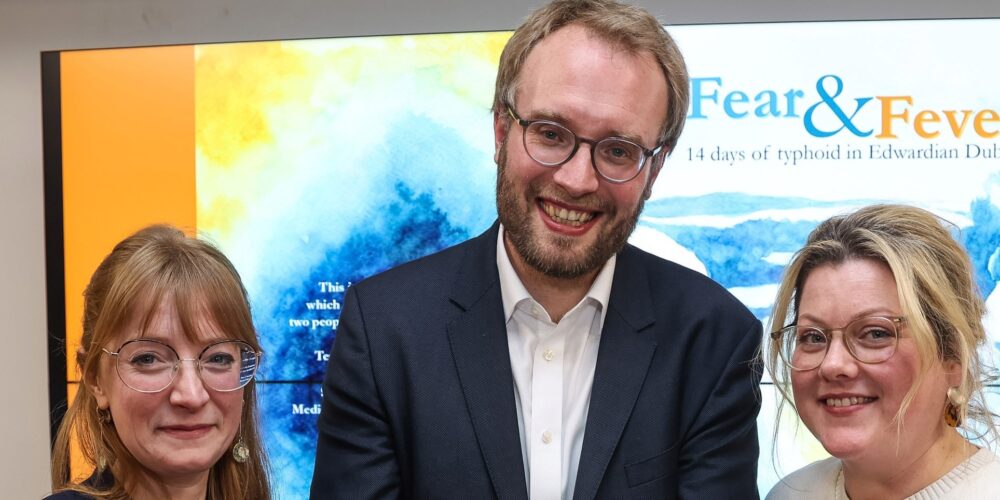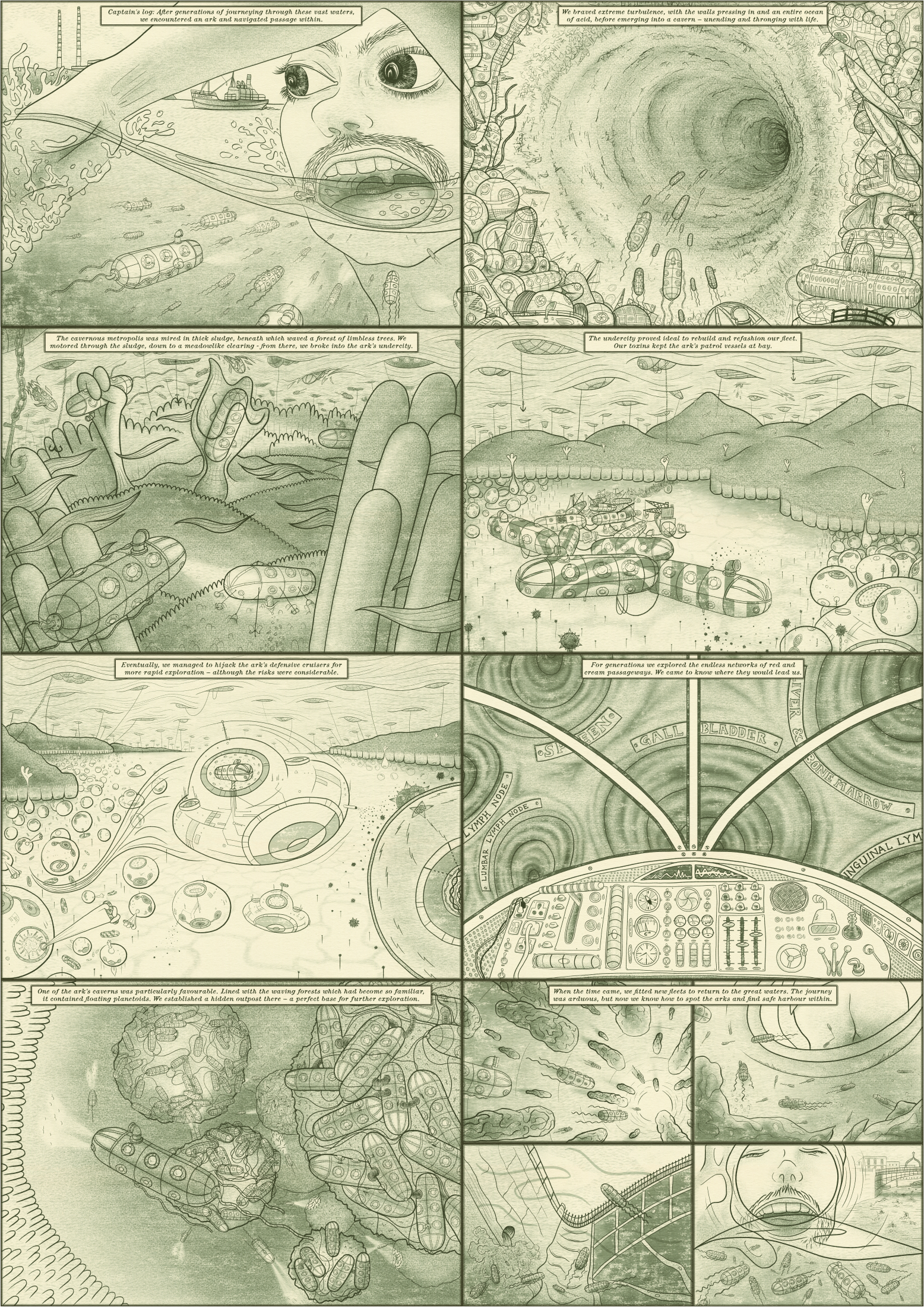
10 October, 2024

Posted: 17 June, 2024
Since 2021, our international team has used historical and digital humanities methods to interweave personal stories of living and dying with typhoid in Edwardian Dublin with the troubled evolution of the city’s sanitary infrastructure and plans to weaponise microbes during the War of Independence. Our research forms a part of a multi-award-winning international engagement project, called Typhoidland, which seeks to challenge the myth of typhoid as a disease of the past, engage global audiences about the importance of typhoid control, and use critical historical research on past public health interventions to inform ongoing control campaigns.
We were inspired to focus on Dublin as a historical case-study highlighting the dangers of one-size fits all thinking in public health. Constructed between the 1870s and 1906, Dublin’s sewerage system was based on a London-inspired imperial template that was designed to quickly flush human waste out of cities. Unfortunately, planners did not adapt this template to Dublin’s local environment. The Liffey’s low flow rate and tidal patterns meant that sewage discharged at the city’s new Ringsend Treatment Plant did not get swept out to sea but ended up polluting local foreshores and shellfish beds. The result was a surge of typhoid and other gastrointestinal outbreaks, which tarnished Dublin’s reputation, and an infrastructural lock-in that continues to cause ecological and health problems.

Research on Dublin’s public health records also enabled us to reconstruct the many everyday tragedies connected with the spread of a disease that infected people from all walks of life – ranging from British troopers and Royalty to leading Irish Nationalists and James Joyce’s siblings. Tracing these histories allowed us to bring to life a not so distant past when fever hospitals, “Lady Sanitary Inspectors”, and cutting-edge bacteriology were all deployed to curb typhoid – and Dublin’s ‘Sweet Molly Malone’ “died of a fever”. Our research also illuminated dark sides of Dublin’s history such as the deep inequalities and overcrowding that allowed the notorious ‘filth disease’ to thrive, the testing of typhoid vaccines on inmates of the local Richmond District Lunatic Asylum in 1900, and Irish Republican Army deliberations on the use of bioagents such as typhoid or glanders (an infection of horses) to target British troops during the Irish War of Independence.
Funding by the Irish Research Council (IRC) and UK Arts and Humanities Council (AHRC) Digital Humanities scheme has allowed us to publish our research for scientific audiences, present insights to public health decision-makers, and design three exciting exhibitions on typhoid research with the Royal College of Physicians of Ireland (RCPI), public health and sanitation in Dublin with Dublin City Library & Archive, and the evolution of biowarfare with University College Dublin (UCD) Archives. All exhibitions launch on 16.06.2024 – and are freely accessible at: www.typhoidland.org. Our rich public engagement portfolio also includes the graphic novel Fear & Fever: 14 Days of Typhoid in Edwardian Dublin (2024), available for free in Dublin libraries and online, engaging animations, new art commissions, and ‘Typhoid Now’, a short film featuring three of Ireland’s leading public health experts.
——————
The Typhoid, Cockles, and Terrorism project is jointly based at UCD (PI, Dr Claas Kirchhelle) and the University of Oxford (PI, Dr Samantha Vanderslott). Postdocs on the project were Dr Emily Webster (now: Durham University) and Dr Carly Collier (UCD). You can follow Typhoidland on X: @typhoidland.